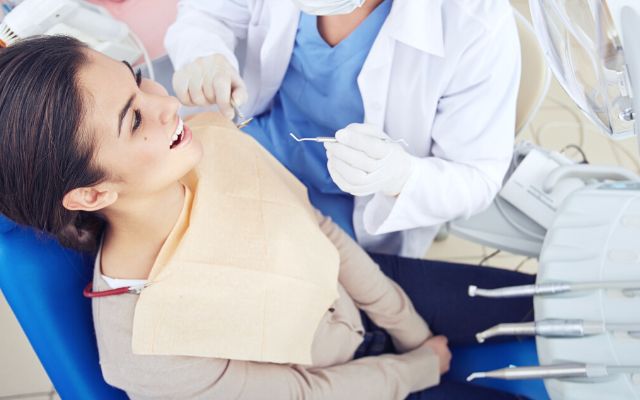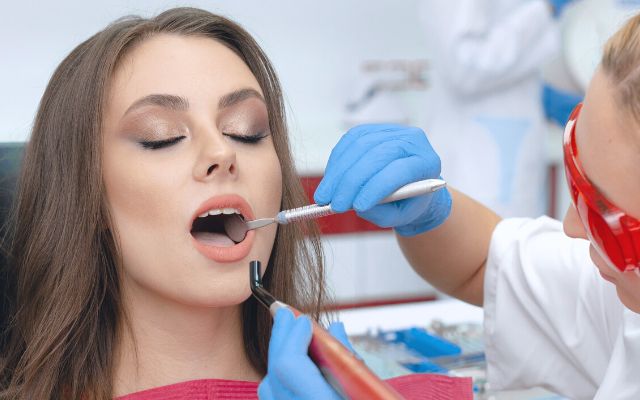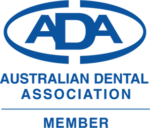Restorative Dentistry
Are you looking for restorative dentistry service in Bassendean? You’ve definitely heard of restorative dentistry procedures like veneers, fillings, crowns, bridges, dentures, and dental implants. These treatments enhance the health and functionality of the mouth.


What is Restorative Dentistry?
Restorative dentistry is the process of restoring the functionality of the mouth through dental operations. This includes taking care of any broken, chipped, or missing teeth in order to restore appropriate chewing, speaking, and biting function.
These techniques, which include the placement of dental implants, fillings, and crowns, are part of the routine preventative and corrective measures performed by most dentists, so you will not need to consult a specialist.
Restorative dentistry is used to maintain your mouth’s health and functionality, as opposed to cosmetic dentistry, which mainly concentrates on the appearance of your teeth.
Types of Restorative Dentistry
Our dentists will be able to provide you with a variety of restorative dentistry solutions depending on your unique needs, including:
Benefits of Dental Restoration
Restorative dentistry offers the best opportunity for long-term oral health. By repairing broken or rotting teeth, your dentist can assist in restoring your smile to its full potential. This enhances your capacity for speaking, chewing, and eating.
Restorative dentistry has numerous advantages for people at all stages of life, including children, teenagers, adults, and seniors such as:
- Restore your Oral Health
- Improved Oral Function
- Reduce Dental Discomfort
- Lessen the Likelihood of Future Tooth Problems
- Make Your Grin More Attractive
- Increased Self-Confidence
- Protection of Teeth
You should always see a dentist if your smile needs a little assistance to appear its best. You’ll get the grin of your dreams from them when you visit them since they are experts at doing it. Then it’s only a matter of time before you fall in love with the person you see in the mirror every morning!
Restorative Dentistry Vs Cosmetic Dentistry
There are many similarities between restorative and cosmetic dentistry. To begin with, they are both employed in the restoration of broken, decaying, or missing teeth.


You won’t need to see a specialist because a normal dentist is capable of performing both of them. This is due to the fact that general dentists may offer preventative, restorative, and aesthetic procedures in their clinics.
But, if cosmetic and restorative dentistry are similar, what does the distinction of these procedures?
Different Goals
While cosmetic dentistry aims to enhance outward appearance, restorative dentistry aims to restore function. In order to preserve optimal function and oral health, restorative dentistry procedures concentrate on replacing lost, decaying, or damaged teeth.
A root canal and dental crown installation is an illustration of a routine restorative surgery. The dental crown in this instance is being utilized as a safeguard against further decay or harm to the tooth structure that is still there.
Differences in Dental Materials
The kind of dental composites used to create restorations is another factor that differentiates restorative dentistry from aesthetic dentistry. In contrast to cosmetic dental restorations, restorative dental restorations are frequently built from materials that are both durable and inexpensive. Fillings consisting of a combination of metals, such as amalgam, are one example of this.
On the contrary, materials for cosmetic dentistry provide both durability and beauty. Dental restorations used for aesthetic purposes are frequently chosen for their color and transparent qualities, which permit the restoration to fit in with the neighboring teeth.
Preparation for Restorative Procedures
The initial consultation is an opportunity for you to catch up with one of our dentists and talk about any dental worries you might be experiencing. It’s an important step in the preparation for any restorative procedures and we want to make sure you feel comfortable and informed every step of the way.
During the consultation, we’ll cover the following:
- Discussion: The dentist will ask the patient about their dental health concerns such as what they hope to gain from restorative dentistry, and what they would like to see changed.
- Dental Examination: This is a full exam of the patient’s teeth and gums to figure out their current dental health and figure out the best way to treat them.
- X-rays: If necessary, the dentist may take X-rays of the patient’s teeth in order to gain a better knowledge of the underlying dental structures and to aid in the planning of the restorative surgery.
- Treatment Plan Preparation: Our dentist will create a personalized treatment plan for you, taking into account all the information from the exam and X-rays, as well as your goals and concerns. This plan will outline the specific restorative procedure needed, the estimated time frame for completion, and the associated costs.
- Optional Discussion: The dentist will also discuss the many restoration alternatives available to the patient. Moreover, they also assist patients in understanding the advantages and disadvantages of each. We will also answer the patient’s inquiries about restorative surgery.
- Scheduling procedures: If the patient wishes to pursue restorative therapy, the dentist will schedule the procedure and explain any pre-operative instructions that must be followed.
Recovery and Aftercare


Recovery and aftercare following restorative dentistry is an essential part of the overall treatment process. Proper care and attention during this time can help ensure successful outcomes and minimize the risk of complications. Here are some of the key aspects of recovery and aftercare for restorative dentistry:
- Pain Management: Depending on the type of restorative procedure, patients may experience some level of discomfort or pain during the recovery period. Pain medication will be prescribed to manage this, and patients should take it as directed. Over-the-counter pain relievers can also be used as directed.
- Dental Hygiene: Maintaining good oral hygiene is important to promote healing and prevent infection. Patients will be instructed to brush and floss regularly and to avoid eating hard or crunchy foods that may damage the restorations. The dentist may also prescribe a special rinse or oral antiseptic.
- Swelling and Bruising: Swelling and bruising may occur following restorative dentistry. Ice packs can be applied to the affected area for the first 48 hours to reduce swelling.
- Follow-Up Visits: Patients will need to return for follow-up visits to monitor the progress of their recovery and to address any issues that may arise. The frequency of these visits will depend on the type of restorative procedure and the individual needs of the patient.
- Avoid Strenuous Activity: Patients should avoid strenuous activity for the first few days following restorative dentistry. This will help reduce the risk of complications and promote healing.
It’s important to follow the instructions of the dentist carefully and to attend all follow-up visits as scheduled. This will help ensure the best possible outcomes and minimize the risk of complications following restorative dentistry.
Contact Restorative Dentistry in Bassendean, Perth
Our Bassendean dentists are highly skilled in all areas of restorative dentistry, from single-tooth restoration to full-mouth reconstruction. We understand that each patient has unique needs, and we will work with you to create a treatment plan that meets your specific requirements.
We want to help you get your smile back! Our restorative dentistry services are designed to help you achieve the beautiful and healthy smile that you deserve. We offer a variety of services so that we can find the perfect solution for your needs.
“Our team of experienced dentists and staff is dedicated to ensuring that every patient receives the highest quality of care, from start to finish.” Dr. Ylan Pham
FAQs
What Is The Strongest Dental Restoration Material?
Zirconia is the strongest material currently used in dental restorations. Zirconia is a white ceramic that can be used for restorations, although it is opaque rather than translucent like natural tooth enamel.
How Long Do Teeth Restorations Last?
With proper oral hygiene, a crown can easily survive for up to 25 years. Some crowns may even be long-lasting.
How Long Does It Take For Tooth Restoration?
Dental restorations might take from a couple of hours to months to complete. Please make an appointment with us to receive the correct response for your situation.
How Is A Tooth Prepared For A Restoration?
To make room for the intended restorative materials and to eliminate any dental decay or structurally weak areas of the tooth, the preparation process typically include cutting the tooth with a rotary dental handpiece and dental burrs.
Is It Too Late To Restore My Teeth?
It is never too late to get your teeth fixed, and with all the new developments that take place every year, it is now even more feasible for everyone to get their ideal smile. Do not be alarmed if you have always battled to maintain a straight smile.





